- Home
- Aer-ki Jyr
Star Force: Flashpoint (SF8) Page 6
Star Force: Flashpoint (SF8) Read online
Page 6
Two more of the missiles were ‘killed’ through damage, making them inoperable before they hit the second acceleration stage. The fourth of the long range missiles began accelerating through a second stage of propellant, aligning itself on the corvette before it was chewed apart by several sequenced hits that continued like a chainsaw as it approached the ship, leaving nothing but pieces to bounce off the hull armor. The closer targets got to the ship the more accurate the anti-missile turrets were, leaving the four missiles little chance of hitting, though a larger cluster fired at shorter distance would have been another matter entirely.
Voss didn’t plan on letting that scenario come to pass. “Target with the main battery,” he ordered. “Disabling shot if possible.”
While the turrets had been doing their job the pilot had been maneuvering the single large laser in line with the approaching ship and zooming in with the targeting scope, which included a laser ‘pointer’ so that when the Captain gave the order he already had the target in his crosshairs. The video feed he was watching showed a detailed, telescopic image of the attacking ship with two large missile racks attached to the hull. He let the shaky targeting laser drift over the port module and fired off a shot, missing as the dot juked off the launcher, due in part to the signal lag.
He knew the targeting would steady the closer the enemy ship got, but he didn’t want to wait that long. The pilot waited through the brief recharge cycle of the main laser and chanced another shot, trying to either hit the launchers or miss wide, keeping the shot away from the main hull if at all possible.
On the image, which had to be zoomed out slightly as the ship continued to approach, one of the box-like compartments exploded, pushing the ship slightly askew by the lateral thrust.
“Nice shot,” Voss congratulated. “Now get the other one.”
“I can’t,” the pilot said, frustrated. “Not until they fix their orientation.”
Voss considered the situation for a moment. “Try for the engines if and when they circle around, reduced power shot.”
“Yes, sir,” the pilot said, watching as the list slowly rotated the ship around, bringing the nose to the left and the destroyed missile pod directly between the two ships…but then the ship’s thrusters fired and killed the list, followed by a 22 missile salvo fired off the front of the warship and which curved sharply to the left, heading towards the corvette.
“Looks like they’re going all in,” Voss said.
“I’m on it,” the pilot said, keying the second weapons mod along with switching the laser power supply back over to charging the cupolas. Along with the offensive missiles was a bank of the fast moving intercepts, with hard armor plates retracting over the launch tubes and exposing them to space.
As the pilot waited for the missiles to close within range of the auto-turrets he kept the main laser’s targeting reticule on the ship, hoping for a clean shot with the single capacitor charge he had left. The ship was still partially lateral, with the bow pointed left but not so much that the rear of the ship was clearly visible. The boxy missile launcher was still covering the engines, and the front of the ship was little more than a square jawed protrusion of hull with a few tiny windows up front. If it wasn’t for the radar signature and the reflecting sunlight, the black paint job would have made it almost completely invisible.
The laser turrets began firing before a target of opportunity presented itself and the pilot abandoned the effort, keying instead for the launch of the intercepts. He had to wait until the missiles were close by to fire, given that the countermeasures had very little range to work with. By the time that happened the lasers had killed five of the 22 missiles, then he switched them off and fired the intercepts with a smooth, coordinated key sequence.
Out of the ‘back’ of the ship sprouted sequenced shoots that looked like fireworks, zipping away from the ship so fast they were hard to follow with the naked eye. On the radar they appeared as tiny fish, swimming out and biting on to the approaching missiles with both winking out upon contact. Two failed to hit on the first pass, with the closure rates being too high for them to circle around and catch up as they continued to travel in towards the corvette.
The pilot switched the lasers back on and the two missiles quickly disappeared, but got within a mile of the ship before splintering apart under the hail of laser blasts. The intercepts that had attempted to spin about and pursue ran out of fuel and began to drift unpowered through the ever decreasing engagement zone.
“They’re running!” the pilot said.
“Stay on them,” Voss ordered.
“I have a shot,” the pilot said as the enemy ship turned as it accelerated.
“Take it then get moving,” Voss allowed.
“Gladly,” the pilot whispered, concentrating. A moment later he fired off the main laser, clipping the engine vents sticking out the back of the ship like flower pedals. The nearest one blew apart in a hail of shrapnel and the ship’s thrust suddenly became erratic, throwing their centerline off target and wobbling their acceleration but not stopping the ship from moving away.
“Pursuit course,” Voss ordered. “You’ll have to get closer to completely disable.”
“Accelerating,” the pilot said, kicking in the corvette’s superior engines and taking it away from the French ship that it had been sliding back towards. “How exactly am I supposed to shoot it without penetrating the hull?”
“Get the other missile rack first, then we’ll talk,” Voss said as he watched the enemy ship list as it continued to thrust hard, taking it in a curved trajectory that was hard to predict an intercept point for, but with the corvette’s greater speed it quickly ate up the course corrections and the miles between the ships scaled down drastically.
No more enemy missiles were launched until they came within 12 miles, at which time six more mushroomed from the front of the ship and pulled a U-turn, heading back towards the corvette but it was no use. The anti-missile systems disposed of them all and the Star Force warship continued to close.
Another well aimed laser shot hit the starboard missile rack a few minutes later as the pilot finally was able to intercept the enemy’s flight line and swing around behind them. No missiles exploded in the box this time, due to the fact that the affected rack area was already empty, but it put a sizeable hole in the assembly none the less.
The warship’s engines were now fully in view, but the pilot knew he couldn’t risk firing into the engine compartments and detonating the full reserves. If they were going to take the ship intact he had to hit specific systems…or in this case perhaps just run the enemy out of fuel, for they were still accelerating hard to get away, with the corvette having to constantly run its engines to maintain pace and closure, dipping below 50% of their own reserves.
A second laser shot blew off a chunk of the starboard missile box, which prompted a sudden reverse of course, with the enemy cutting all engine thrust, then using thrusters to flip over to face the closing corvette. It then ran its engines up to full thrust and set an intercept course.
“Captain?” the pilot asked.
“I see it,” Voss said steadily. “Focus on the missiles.”
The pilot nodded and lined up the laser with the inside of the port box, with the reticule no longer jumping around as much now that the target was less than 5 miles away, made all the more steadier when he cut out the corvette’s engines. He fired a precise shot and blasted away most of the port missile rack, with a large piece drifting off away from the enemy ship as it continued to accelerate hard towards them.
When it closed to within a mile it launched its remaining 11 missiles at nearly pointblank range. The corvette’s anti-missile systems chewed apart 7 of them, and a few hastily launched intercepts took down 3 more, but one of the missiles slipped through and impacted the front right corner of the corvette, detonating against the armor plating.
The enemy ship flew by less than 50 meters away, carrying its forward momentum and now adding it to the corvette’s…which
was now drifting away from the target.
“Damage report,” Voss ordered.
“Not too bad, armor took most of it,” the pilot reported. “We lost one engine vent, directional thrust is gone but I can manage on the others.”
“Get after them, they can’t have much fuel left,” Voss said, keeping his nerve. “They’re not going to get away.”
“Pursuing,” the pilot noted, a bit frustrated that his ship took damage when he could have killed the enemy warship multiple times over by now. He rotated the ship around so that he didn’t have to utilize the damaged vent and could keep the laser pointed forward, then applied smooth but not full thrust, negating the enemy’s acceleration curve and gradually surpassing it, keeping the pressure on but not closing too fast, making sure they kept them running to bleed off their remaining fuel.
When the corvette finally caught up to within a mile Voss made a command decision.
“Pop an intercept into their engines.”
The pilot smiled. “Yes, sir,” he said, tagging the ship and sending the tiny firecracker streaking forward. The lower yield charge was less destructive than a missile, but still posed a risk of detonating their fuel supply or penetrating their hull and cracking their atmospheric containment. Voss figured with the fuel nearly gone the risk of explosion would be less, but the truth was he was tired of playing nice with these murderers…especially since they just damaged one of the ships in his fleet.
The warship had a cluster of six engines in back and the intercept hit center left, blowing apart five of the petal-like vents and sending a lot of shrapnel into the rear of the ship and the internal engine components. As soon as the intercept exploded a secondary plume of some compressed gas puffed out the back but that was the extent of the damage. The ship’s engine thrust completely stopped and the warship went ballistic.
“Well done,” Voss said, glad to see the warship’s wings clipped. “Now see if we can get a comm line established.”
“It’s still wired to your chair, sir,” the pilot reminded him.
“That it is,” Voss suddenly remembered, flicking the switch. “Unidentified warship, your engines are gone, your attempt to destroy us failed, and we have the ability to kill you at any moment we wish. That said, we’d prefer to take you prisoner. Our terms are simple. Establish communications, identify yourself, and make no other attempts at hostilities. We’ll arrange for your recovery...or you can sit here and slowly die, because the only way you’re leaving here alive is in our custody. The choice is yours.”
Voss waited a long time for a response, but the enemy wasn’t squawking. During the wait he contacted the Archons and arranged for an SR to be dispatched to board and recover the ship…something their drone corvette couldn’t do. They’d already prepped a number of ships for this purpose but the nearest one was 18 hours away, which meant they needed to get it moving as soon as possible.
Fifty minutes into the wait Voss finally got a response from the enemy.
There was a secondary viewscreen on the bridge of the Turok showing the camera telemetry from the corvette, with the warship sitting quietly in the center of the screen without so much as a thruster puff. Voss visibly jumped in his seat when the previously steady image mushroomed out in a debris-ridden, fireless explosion that utterly destroyed the ship.
“That wasn’t me,” the pilot said, aghast.
Voss’s jaw clenched in anger. “Did our ship take any hits?”
“All systems show operational, save for the initial missile damage. I have no way of checking the armor without an auxiliary camera.”
“Keep the ship where it is, we need to be able to locate the debris when the SR arrives. They might be able to salvage something,” Voss said, disgusted.
One of the other bridge staff shook her head, not believing what had just happened. “They did that on purpose?”
“Whoever they are,” Voss said slowly, “they don’t want us to know.”
“But to kill themselves?” she asked.
“More to the point,” the 1st officer chimed in, “why would they build a ship with a self-destruct in the first place? That was a warhead explosion, and it came from inside the ship, not the missile racks…meaning they designed the ship that way.”
“Oh my god,” one of the pilots whispered.
“These people are killers,” Voss said, trying to give some clarity to the moment. “Don’t expect them to be rational.”
“What now?” the 1st officer asked.
“We know this isn’t the only ship on the prowl,” Voss said, thinking ahead. “We let the Archons pick apart the debris, maybe gleam some idea who these people are. As far as we’re concerned the hunt goes on minus the corvette…and we start by backtracking this one’s approach line. Maybe we’ll get lucky and find its point of origin. If not, we keep searching and clearing orbital grids until we find them.”
“Or wait until they strike again,” the corvette pilot muttered.
Voss didn’t respond to the comment, but he knew the man was probably right.
8
November 13, 2059
Paul walked into the control room, his hair still wet from a recent shower, and found Roger studying the orbital map. “What have we got?”
“Harper picked up another radar contact with no transponder traveling in zone 6 on no apparent intercept and sent a cutter to shadow it. After a course correction it headed for the traffic lanes, hopefully for a rendezvous.”
“Hopefully?”
“The cutter got close enough to give Cyclops coordinates and we pulled several visuals,” Roger said, pointing Paul to an auxiliary screen. “There doesn’t appear to be any missile racks, so either it’s carrying different weapons or it’s a cargo ship.”
“Headed for a mid-course rendezvous outside of radar range,” Paul surmised.
“That’s what I’m hoping for. If they are we can ID their contact then follow the flow of supplies to the warships.”
“If you’re right this explains how they’re getting supplies out, but not where the phantom ships are being built.”
“If we’re lucky the supplies might be going there,” Roger pointed out. “Either way there’s no reason to intercept the ship now.”
“If it’s a cargo ship,” Paul amended as he scrutinized the photos. “How big is it?”
“Bigger,” Roger said, already having run some basic numbers. “At least by a factor of 2. We’re too far away to get a good radar silhouette.”
“Speed?”
“Slow. Not nearly the closure rate of the warship, which also suggests a different model.”
Paul nodded his agreement. “Good. What else do we have in the area?”
“Another cutter moving into support position a few hours out and two passing freighters.”
The freighters would give them two more radar platforms, Paul knew, but they would be of no other use.
“Any probables?”
“Nothing matches up yet, so I’m guessing they’re heading into a waiting position. When the target comes into range they accelerate, match speeds to transfer cargo, then the phantom moves off and the transponder signal from the tagged ship never so much as budges.”
“That’d be my guess,” Paul said, looking down the traffic lines to see what was already on the way…unfortunately there were more than 15 ships that were to pass through the area in the next 2 days, so it was impossible to make any reasonable picks. “Any response to our radar?”
“Nope, looks like they’re blind as a bat…or pretending as much.”
“I went over the telemetry from the battle again, and as far as I can tell the ship sent no signals whatsoever. Their friends may not even have missed them yet if all their ships are running dark.”
“Any word from the French?” Roger asked, wondering if their ruckus had been detected.
“Still nothing. It’s possible no one was paying attention to the radar and they just missed it.”
“Or they had it turned off.�
�
“Regardless, they’ve made no inquiries or public statements, but the ship did reach port this morning so I don’t think our secret will last much longer.”
“You think they’ll back off the attacks?” Roger asked, not really thinking that likely.
“Might make them pause to find out what happened to their ship, so we need to stay on this one without spooking it. We need to find out where these bastards are coming from and if they turtle up we’re going to have a hard time finding them again.”
“Well, the only way we can track them is with radar, and if they get smart to that we don’t have any other options.”
“I know,” Paul said, wishing they had a way of putting a homing beacon on the ship. “Let’s just hope we get lucky with this one.”
Four days later the phantom cargo ship finally moved from its holding position just off the main Lunar traffic lane and began to accelerate for an intercept…but not before another attack occurred elsewhere in orbit, with a small Japanese transport being hit down in zone 3 inside radar range. The warship destroyed the ship and retreated back to the dark zones before anyone could arrive to assist, though a nearby American warship did make a futile attempt at pursuit.
The position of the attack did give Star Force another data point to add in their analysis, but at the cost of another 12 lives. The rising death count was really beginning to get under Harper’s skin and by the time the enemy cargo ship made its move the Mjolnir had not one, but three cutters standing by at varying distances to insure that it did not get away this time.
More than an hour before the intercept was made both the battleship and the Archons had done the math and identified the selected target for what they assumed was a rendezvous…which turned out to be a Chinese transport, Jaguar-class.
Not wanting to give their presence away, Harper had the cutters stop transmitting active radar once Cyclops had a lock on the large Star Force-produced transport. He had one of the cutters close in on the converging ships in case this did turn out to be an actual attack…which was when they noticed that the Jaguar wasn’t broadcasting an active radar signal of its own.

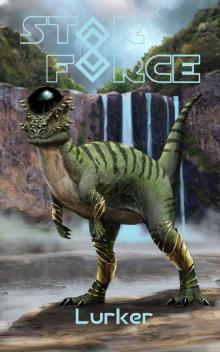 Lurker
Lurker Whitmore Day
Whitmore Day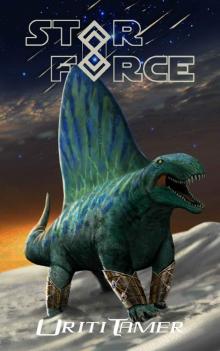 Uriti Tamer
Uriti Tamer The Powers That Be
The Powers That Be Star Force: Captains Mint (Star Force Universe Book 70)
Star Force: Captains Mint (Star Force Universe Book 70) Point Zero
Point Zero Star Force: Temple Wars
Star Force: Temple Wars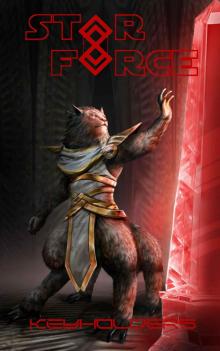 Star Force: Keyholders (Star Force Universe Book 61)
Star Force: Keyholders (Star Force Universe Book 61) Enlightenment
Enlightenment Star Force: Legacy of the Ancients (Star Force Universe Book 59)
Star Force: Legacy of the Ancients (Star Force Universe Book 59)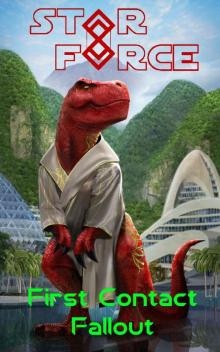 First Contact Fallout
First Contact Fallout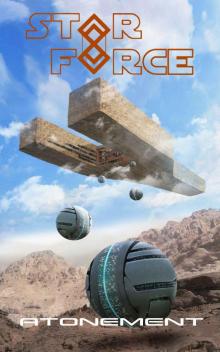 Star Force- Atonement
Star Force- Atonement Carnage
Carnage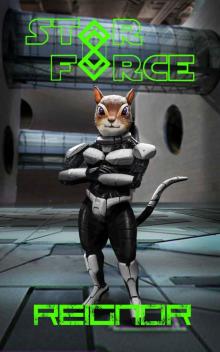 Reignor
Reignor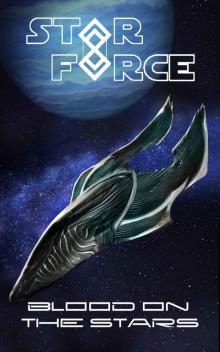 Blood on the Stars
Blood on the Stars Star Force: Death Mark (Star Force Universe Book 67)
Star Force: Death Mark (Star Force Universe Book 67)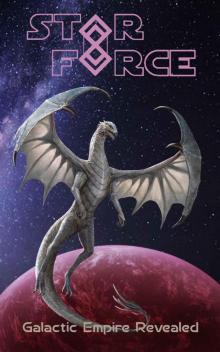 Star Force: Galactic Empire Revealed (Star Force Universe Book 63)
Star Force: Galactic Empire Revealed (Star Force Universe Book 63) Vargemma
Vargemma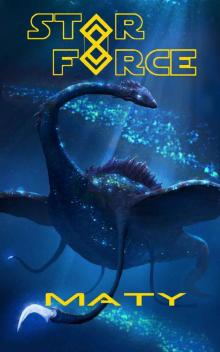 Maty
Maty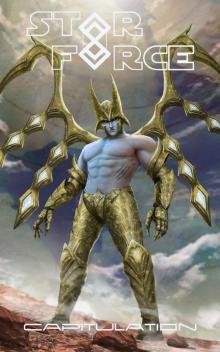 Star Force: Capitulation (Star Force Universe Book 73)
Star Force: Capitulation (Star Force Universe Book 73) Star Force: Phoenix (Star Force Universe Book 62)
Star Force: Phoenix (Star Force Universe Book 62)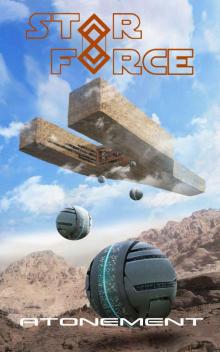 Star Force: Atonement (Star Force Universe Book 68)
Star Force: Atonement (Star Force Universe Book 68) Death Mark
Death Mark Star Force: Penance (SF49)
Star Force: Penance (SF49) Star Force: Headstrong (SF72)
Star Force: Headstrong (SF72)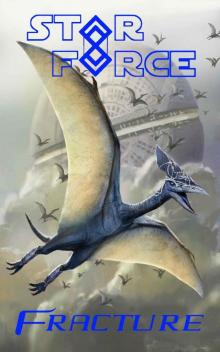 Star Force: Fracture (Star Force Universe Book 47)
Star Force: Fracture (Star Force Universe Book 47) Star Force: Eviction (SF33)
Star Force: Eviction (SF33) Star Force: Secession (SF13)
Star Force: Secession (SF13)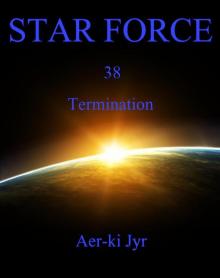 Star Force: Termination (SF38)
Star Force: Termination (SF38) Star Force: Origin Series Box Set (1-4)
Star Force: Origin Series Box Set (1-4) Gateways
Gateways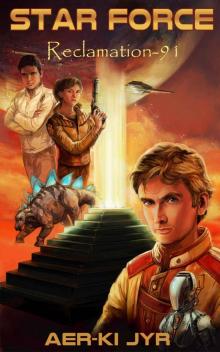 Star Force: Reclamation (SF91) (Star Force Origin Series)
Star Force: Reclamation (SF91) (Star Force Origin Series) Star Force: Excalibur (Star Force Universe Book 41)
Star Force: Excalibur (Star Force Universe Book 41)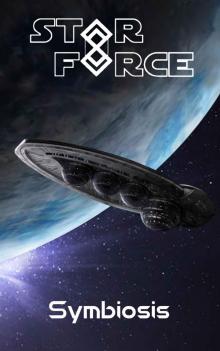 Star Force: Symbiosis (Star Force Universe Book 72)
Star Force: Symbiosis (Star Force Universe Book 72) Star Force: Origin Series Box Set (25-28)
Star Force: Origin Series Box Set (25-28)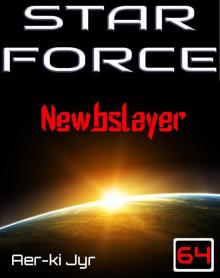 Star Force: Newbslayer (SF64)
Star Force: Newbslayer (SF64)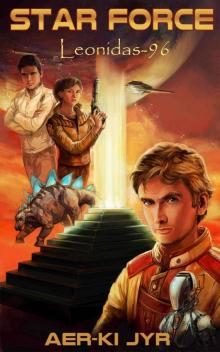 Star Force: Leonidas (SF96) (Star Force Origin Series)
Star Force: Leonidas (SF96) (Star Force Origin Series) Star Force: Origin Series Box Set (9-12)
Star Force: Origin Series Box Set (9-12) Star Force: Ysalamir (Star Force Universe Book 54)
Star Force: Ysalamir (Star Force Universe Book 54) Star Force: Starchaser (SF69)
Star Force: Starchaser (SF69) Star Force: Inception (SF1)
Star Force: Inception (SF1)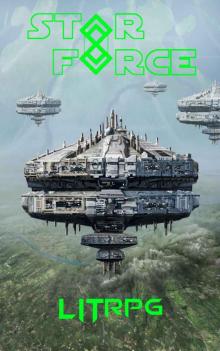 Star Force: LITrpg (Star Force Universe Book 64)
Star Force: LITrpg (Star Force Universe Book 64) Star Force: Psionics (SF29)
Star Force: Psionics (SF29) Star Force: Essence (Star Force Universe Book 51)
Star Force: Essence (Star Force Universe Book 51)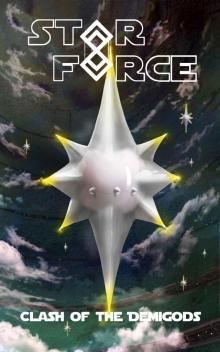 Star Force: Clash of the Demigods (Star Force Universe Book 60)
Star Force: Clash of the Demigods (Star Force Universe Book 60) Star Force: Zen'zat (SF14)
Star Force: Zen'zat (SF14) Star Force: Ice Queen
Star Force: Ice Queen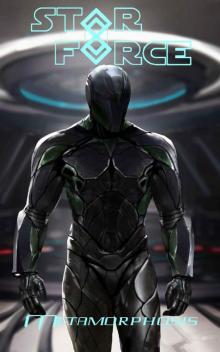 Metamorphosis
Metamorphosis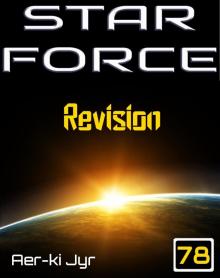 Star Force: Revision (SF78)
Star Force: Revision (SF78) Star Force: Recalibration (SF30)
Star Force: Recalibration (SF30)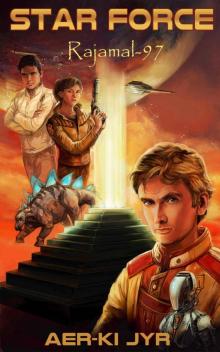 Star Force: Rajamal (SF97) (Star Force Origin Series)
Star Force: Rajamal (SF97) (Star Force Origin Series)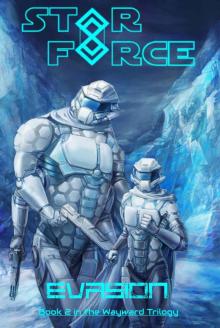 Star Force: Evasion (Wayward Trilogy Book 2)
Star Force: Evasion (Wayward Trilogy Book 2) Star Force: Mastermind (SF32)
Star Force: Mastermind (SF32) Star Force: Excursion (SF46)
Star Force: Excursion (SF46) Star Force: Deception (SF11)
Star Force: Deception (SF11) Star Force: Cascade (SF73)
Star Force: Cascade (SF73) Star Force Perseverance (SF81) (Star Force Origin Series)
Star Force Perseverance (SF81) (Star Force Origin Series)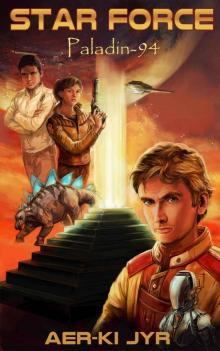 Star Force: Paladin (SF94) (Star Force Origin Series)
Star Force: Paladin (SF94) (Star Force Origin Series) Star Force: Revelation (SF79)
Star Force: Revelation (SF79)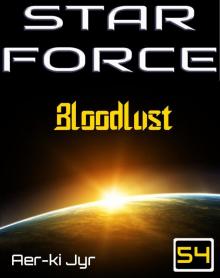 Star Force: Bloodlust (SF54)
Star Force: Bloodlust (SF54) Star Force: Instinct (Star Force Universe Book 49)
Star Force: Instinct (Star Force Universe Book 49) Star Force: Intimidation (SF17)
Star Force: Intimidation (SF17)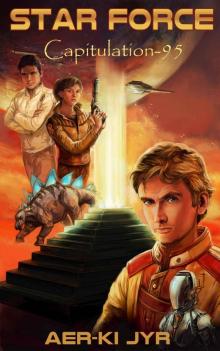 Star Force: Capitulation (SF95) (Star Force Origin Series)
Star Force: Capitulation (SF95) (Star Force Origin Series)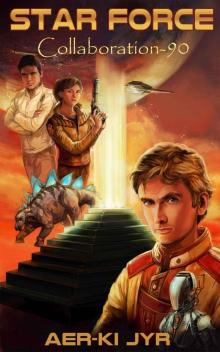 Star Force: Collaboration (SF90) (Star Force Origin Series)
Star Force: Collaboration (SF90) (Star Force Origin Series) Star Force: Mak'to'ran (4)
Star Force: Mak'to'ran (4) Star Force: Unification (SF39)
Star Force: Unification (SF39) Star Force: Origin Series Box Set (37-40)
Star Force: Origin Series Box Set (37-40) Star Force: Fabrication (SF7)
Star Force: Fabrication (SF7) Star Force: Marauders (SF63)
Star Force: Marauders (SF63) Star Force: Ringworld (SF80)
Star Force: Ringworld (SF80) Star Force: Earth Evacuation
Star Force: Earth Evacuation Star Force: Nemesis (SF3)
Star Force: Nemesis (SF3) Star Force: Ambrosia (SF6)
Star Force: Ambrosia (SF6)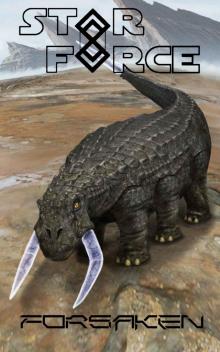 Star Force_Forsaken
Star Force_Forsaken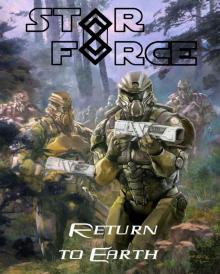 Star Force: Return to Earth
Star Force: Return to Earth Star Force: Knighthood (SF36)
Star Force: Knighthood (SF36) Star Force: Bahamut (SF86) (Star Force Origin Series)
Star Force: Bahamut (SF86) (Star Force Origin Series) Star Force: Integration (SF2)
Star Force: Integration (SF2) Star Force: Benefactor (SF19)
Star Force: Benefactor (SF19) Star Force: Revulsion (SF70)
Star Force: Revulsion (SF70) Star Force: Divide (SF76) (Star Force Origin Series)
Star Force: Divide (SF76) (Star Force Origin Series)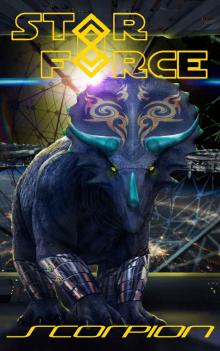 Star Force: Scorpion (Star Force Universe Book 42)
Star Force: Scorpion (Star Force Universe Book 42) Star Force: Extirpation (Star Force Universe Book 56)
Star Force: Extirpation (Star Force Universe Book 56)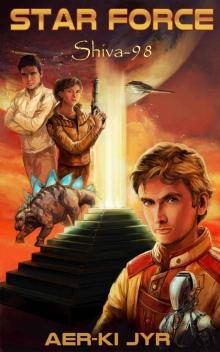 Star Force: Shiva (SF98) (Star Force Origin Series)
Star Force: Shiva (SF98) (Star Force Origin Series) Star Force: Origin Series Box Set (5-8)
Star Force: Origin Series Box Set (5-8) Star Force: Disarmament (SF10)
Star Force: Disarmament (SF10) Star Force: Escalation (SF12)
Star Force: Escalation (SF12)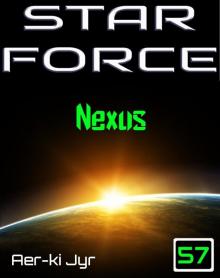 Star Force: Nexus (SF57)
Star Force: Nexus (SF57) Star Force: Gemini (SF5)
Star Force: Gemini (SF5)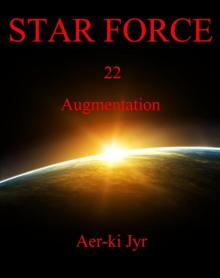 Star Force: Augmentation (SF22)
Star Force: Augmentation (SF22) Star Force: Mettle (SF9)
Star Force: Mettle (SF9) Star Force: Rammus (SF83) (Star Force Origin Series)
Star Force: Rammus (SF83) (Star Force Origin Series)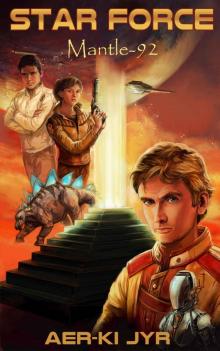 Star Force: Mantle (SF92) (Star Force Origin Series)
Star Force: Mantle (SF92) (Star Force Origin Series)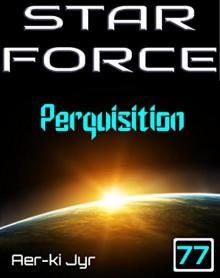 Star Force: Perquisition
Star Force: Perquisition Star Force: Upgrades (SF41)
Star Force: Upgrades (SF41) Star Force: Rift
Star Force: Rift Star Force: Mak'to'ran (5)
Star Force: Mak'to'ran (5) Star Force: Consensus (SF43)
Star Force: Consensus (SF43) Star Force: Ascension (SF27)
Star Force: Ascension (SF27) Star Force: Axius (SF47)
Star Force: Axius (SF47) Star Force: Canderous (SF16)
Star Force: Canderous (SF16) Star Force: Insurrection (SF28)
Star Force: Insurrection (SF28) Star Force: Mak'to'ran (1)
Star Force: Mak'to'ran (1) Star Force: Backstab (SF23)
Star Force: Backstab (SF23) Star Force: Hamoriti (SF62)
Star Force: Hamoriti (SF62) Star Force: Flashpoint (SF8)
Star Force: Flashpoint (SF8) Star Force: Aquatics (SF31)
Star Force: Aquatics (SF31) Star Force: Divergent (SF74)
Star Force: Divergent (SF74) Star Force: Origin (SF24)
Star Force: Origin (SF24)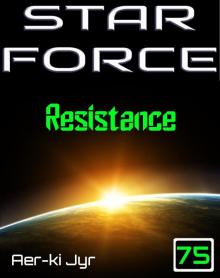 Star Force 75: Resistance
Star Force 75: Resistance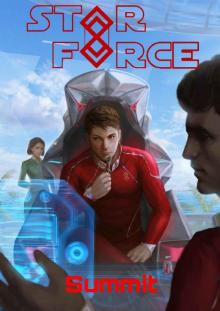 Star Force: Summit (Star Force Universe Book 44)
Star Force: Summit (Star Force Universe Book 44)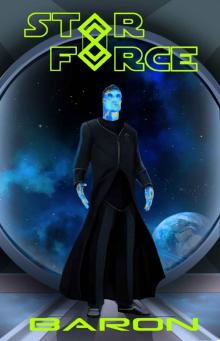 Star Force: Baron (Star Force Universe Book 43)
Star Force: Baron (Star Force Universe Book 43) Star Force: Mak'to'ran (2)
Star Force: Mak'to'ran (2) Star Force: Trials (SF68)
Star Force: Trials (SF68) Star Force: Origin Series Box Set (13-16)
Star Force: Origin Series Box Set (13-16) Star Force: Persistent Ravage (Wayward Trilogy Book 3)
Star Force: Persistent Ravage (Wayward Trilogy Book 3)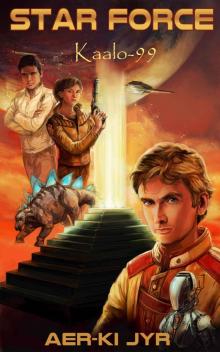 Star Force: Kaalo (SF99) (Star Force Origin Series)
Star Force: Kaalo (SF99) (Star Force Origin Series)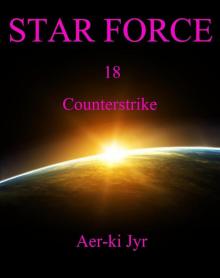 Star Force: Counterstrike (SF18)
Star Force: Counterstrike (SF18) Star Force: Foothold (SF25)
Star Force: Foothold (SF25)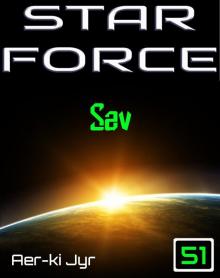 Star Force: Sav (SF51)
Star Force: Sav (SF51) Star Force: Veracious (SF48)
Star Force: Veracious (SF48) Star Force: Allegiance (SF21)
Star Force: Allegiance (SF21)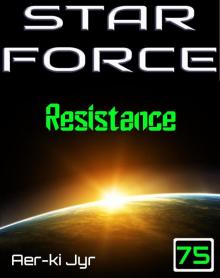 Star Force: Resistance (SF75)
Star Force: Resistance (SF75) Star Force: Deceit (SF34)
Star Force: Deceit (SF34) Star Force: Lost Destiny (Wayward Trilogy Book 1)
Star Force: Lost Destiny (Wayward Trilogy Book 1)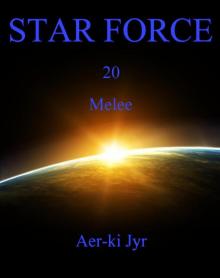 Star Force: Melee (SF20)
Star Force: Melee (SF20)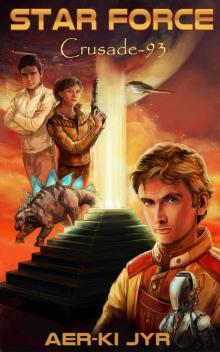 Star Force: Crusade (SF93) (Star Force Origin Series)
Star Force: Crusade (SF93) (Star Force Origin Series) Star Force: Scruples (SF37)
Star Force: Scruples (SF37) Star Force: Trailblazer (SF4)
Star Force: Trailblazer (SF4)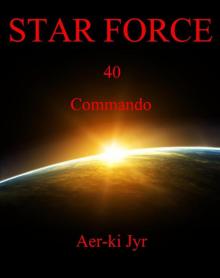 Star Force: Commando (SF40)
Star Force: Commando (SF40) Star Force: Retribution (SF60)
Star Force: Retribution (SF60) Star Force: Relocation (SF44)
Star Force: Relocation (SF44) Star Force: Dominance (Star Force Universe Book 50)
Star Force: Dominance (Star Force Universe Book 50) Star Force: Death Knell (SF26)
Star Force: Death Knell (SF26) Apex
Apex Star Force: Paradigm (SF35)
Star Force: Paradigm (SF35) Star Force: Origin Series (17-20)
Star Force: Origin Series (17-20) Star Force: Mak'to'ran (3)
Star Force: Mak'to'ran (3) Star Force: Colonization (SF15)
Star Force: Colonization (SF15)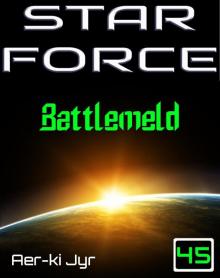 Star Force: Battlemeld (SF45)
Star Force: Battlemeld (SF45)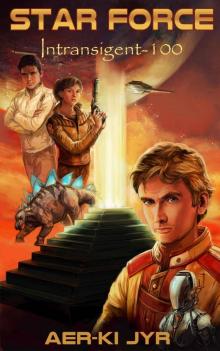 Star Force: Intransigent (SF100) (Star Force Origin Series)
Star Force: Intransigent (SF100) (Star Force Origin Series) Star Force: Shame (SF59)
Star Force: Shame (SF59) Star Force: Origin Series Box Set (33-36)
Star Force: Origin Series Box Set (33-36)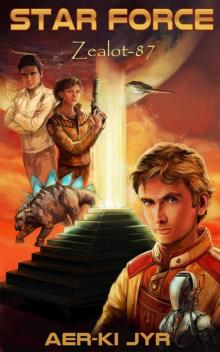 Star Force: Zealot (SF87) (Star Force Origin Series)
Star Force: Zealot (SF87) (Star Force Origin Series)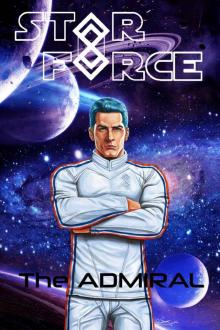 Star Force: The Admiral
Star Force: The Admiral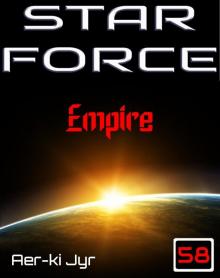 Star Force: Empire (SF58)
Star Force: Empire (SF58) Star Force: Origin Series Box Set (29-32)
Star Force: Origin Series Box Set (29-32) Star Force 82 Hradeiti (SF82) (Star Force Origin Series)
Star Force 82 Hradeiti (SF82) (Star Force Origin Series) Star Force: Forsaken (Star Force Universe Book 48)
Star Force: Forsaken (Star Force Universe Book 48) Star Force: Origin Series Box Set (21-24)
Star Force: Origin Series Box Set (21-24) Star Force: Resurrection (SF84) (Star Force Origin Series)
Star Force: Resurrection (SF84) (Star Force Origin Series)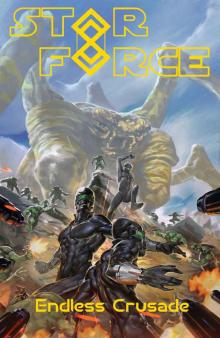 Star Force: Endless Crusade
Star Force: Endless Crusade Star Force: The Dinosaur War (Star Force Universe Book 45)
Star Force: The Dinosaur War (Star Force Universe Book 45)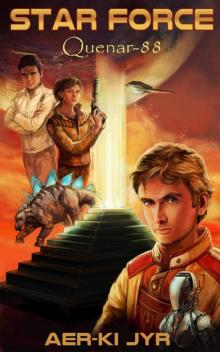 Star Force: Quenar (SF88) (Star Force Origin Series)
Star Force: Quenar (SF88) (Star Force Origin Series) Star Force: Intellect (SF85) (Star Force Origin Series)
Star Force: Intellect (SF85) (Star Force Origin Series)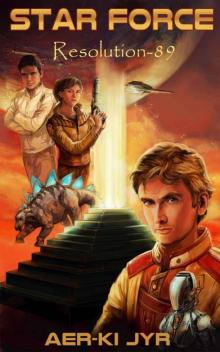 Star Force: Resolution (SF89) (Star Force Origin Series)
Star Force: Resolution (SF89) (Star Force Origin Series)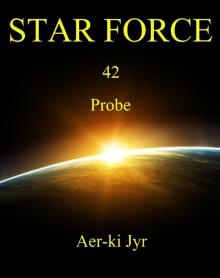 Star Force: Probe (SF42)
Star Force: Probe (SF42)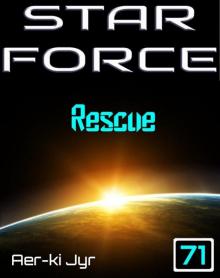 Star Force: Rescue (SF71)
Star Force: Rescue (SF71) Star Force: Evacuation (SF50)
Star Force: Evacuation (SF50) Star Force: Survivor (SF52)
Star Force: Survivor (SF52)